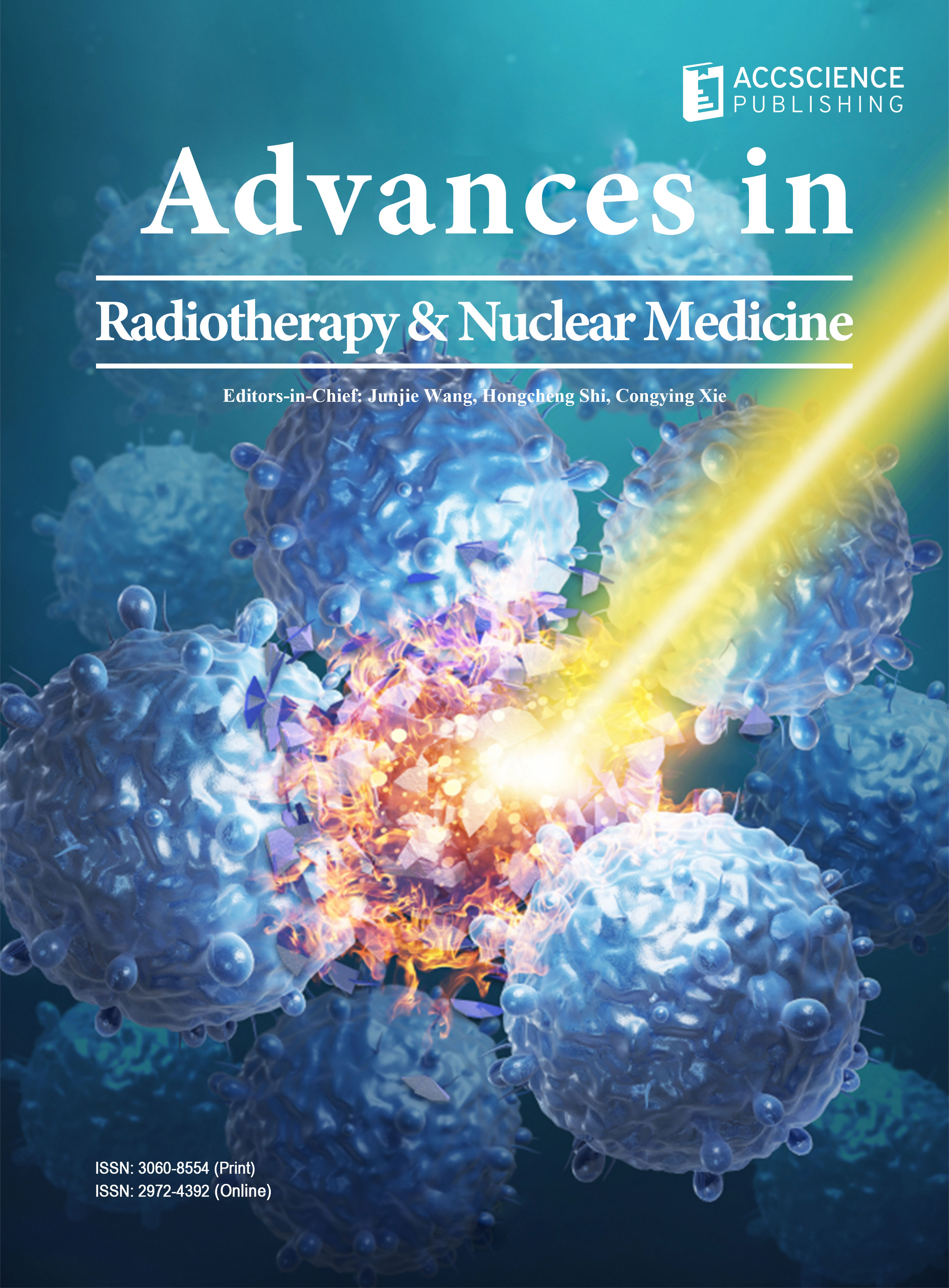Pharmacopeial parametric release strategy in microbiological quality control of radiopharmaceuticals

Nuclear medicine is used to assess body functionality at various levels of biological organization and is increasingly employed for both diagnostic and therapeutic purposes. Nearly 5% of radiopharmaceuticals are used therapeutically, whereas approximately 95% are used for diagnosis. Diagnostic radiopharmaceuticals are generally considered safe because they are administered in subpharmacological doses, and the radiotracer components are employed in minimal doses. Consequently, the radiation exposure to the body during nuclear medicine investigations is typically low. However, when radiopharmaceuticals are used for therapeutic applications such as tumor ablation and bone pain palliation, the emitted radiation is highly localized and potent. Radiotracers and radiation doses are more carefully selected for young patients, as the radiation-induced risk of adverse health effects is greater in children than in adults. Radiopharmaceutical preparations should adhere to the established standards of pharmacopoeia worldwide to ensure safety and efficacy. Adherence to current good manufacturing practices, sterility, and good radiation practices are prerequisites for ensuring effective quality assurance and quality control systems during radiopharmaceutical preparation. The quality control test parameter for radiopharmaceuticals primarily involves physicochemical and biological tests. However, significant concerns exist regarding the biological testing of radiopharmaceuticals, necessitating their parametric release. The time-intensive traditional sterility test, bacterial endotoxin test, and rabbit pyrogen tests have been critical quality control issues due to the short half-lives of most radiopharmaceuticals, as they should be dispensed at the earliest to ensure optimal diagnostic/therapeutic benefit. Therefore, manufacturers of radiopharmaceuticals, dispensers, and nuclear medicine specialists should be cognizant of the issues posed by biological quality control as a primary obstacle to ensuring consistent quality through parametric release from a compendial test method standpoint.
- Molavipordanjani S, Hosseinimehr SJ. Fundamental concepts of radiopharmaceuticals quality controls. Pharm Biomed Res. 2018;4(3):1-8. doi: 10.18502/pbr.v4i3.538
- Lindsley CW, Müller CE, Bongarzone S. Diagnostic and therapeutic radiopharmaceuticals. J Med Chem. 2022;65(19):12497-12499. doi: 10.1021/acs.jmedchem.2c01403
- Mora-Román JJ, Esquivel-Álvarez A, Quesada-Morales E, et al. Radiopharmaceuticals: A mini review of applications and innovations on nuclear medicine. World J Pharm Res. 2021;10(13):64-79. doi: 10.20959/wjpr202113-22132
- Sharma N, Kaur H, Sharma RK. Radiopharmaceuticals regulations: Current scenario and the way forward. Appl Clin Res Clin Trials Regul Affairs. 2017;4:1-12. doi: 10.2174/2213476X04666170410141155
- Kaushik D, Jangra P, Verma R, et al. Radiopharmaceuticals: An insight into the latest advances in medical uses and regulatory perspectives. J Biosci. 2021;46:27. doi: 10.1007/s12038-021-00147-5
- Meher BR. Inclusion of radiopharmaceuticals in the Indian pharmacopeia: A step forward. Indian J Nucl Med. 2020;35(1):1-3. doi: 10.4103/ijnm.IJNM_133_19
- Indian Pharmacopoeia. Available from: https://ipc.gov. in/mandates/indian/pharmacopoeia/about-ip.html [Last accessed on 2023 Nov 20].
- Thota P, Thota A, Pandey MK, et al. A comparative study of pharmacopoeial quality standards and regulations of radiopharmaceuticals. Indian J Nucl Med. 2021;36:153-162. doi: 10.4103/ijnm.ijnm_222_20
- Radiopharmaceutical Preparations, Indian Pharmacopoeia. 9th ed. Ghaziabad: Indian Pharmacopoeia Commission; 2022.
- Radiopharmaceutical Preparations, British Pharmacopeia; 2023.
- Radiopharmaceutical Preparations, European Pharmacopeia. Version 11.0; 2023.
- Radiopharmaceutical Preparations, United States Pharmacopeia. Rockville, MD: The United States Pharmacopoeial Convention; 2022.
- Radiopharmaceuticals, the International Pharmacopoeia. 11th ed. Geneva: World Health Organization; 2023.
- Radiopharmaceutical Preparations, Chinese Pharmacopoeia; 2015.
- Radiopharmaceutical Preparations, Japanese Pharmacopoeia. 18th ed.; 2021.
- Khurshid SJ, Sadiq MZ. Quality assurance in nuclear medicine--biological quality control of radiopharmaceuticals. Pak J Pharm Sci. 1996;9(1):43-54.
- Maltby P, Liverpool (UK). Radiopharmacy Quality Control. Available from: https://www.eanm.org/content-eanm/ uploads/cte-archive/2009/cte-6/cte6_3.pdf [Last accessed on 2023 Nov 20].
- Radiopharmaceuticals: Directives 65/65/EEC, 75/318/EEC as amended, Directive 89/343/EEC; 1990.
- Radiopharmaceuticals: Directives 65/65/EEC, 75/318/EEC as amended, Directive89/343/EEC; 1990.
- The International Pharmacopoeia. Radiopharmaceuticals General Monograph, Working Document QAS/13.542/Rev.2; 2017. Available from: https://www.who.int/docs/default-source/medicines/norms-and-standards/current-projects/ qas13-542rev2-general-chapter-radiopharmaceuticals. pdf?sfvrsn=516dbf81_2 [Last accessed on 2023 Nov 20].
- Loveless VS. Quality Control of Compounded Radiopharmaceuticals. Vol. 15., Lesson 3. United States: UNM College of Pharmacy; 2009.
- Gillings N, Hjelstuen O, Ballinger J, et al. Guideline on current good radiopharmacy practice (cGRPP) for the small-scale preparation of radiopharmaceuticals. EJNMMI Radiopharm Chem. 2021;6:8. doi: 10.1186/s41181-021-00123-2
- Saha GB. Quality control of radiopharmaceuticals. In: Fundamentals of Nuclear Pharmacy. New York: Springer; 1998. doi: 10.1007/978-1-4757-2934-4_8
- Wind K. The sterility testing of radiopharmaceuticals. In: Radiopharmacy and Radiopharmacology Yearbook; 1985. Available from: https://www.taylorfrancis.com/ chapters/edit/10.4324/9781315074771-2/sterility-testing-radiopharmaceuticals-kevin-wind [Last accessed on 2023 Nov 20].
- Sharma S, Jain S, Baldi A, Singh RK, Sharma RK. Intricacies in the approval ofradiopharmaceuticals - regulatory perspectives and the way forward. Curr Sci. 2019;116(1):47-55. doi: 10.18520/cs/v116/i1/47-55
- Sterility, Indian Pharmacopoeia. 9th ed. Ghaziabad: Indian Pharmacopoeia Commission; 2022.
- Sterility, British Pharmacopeia. Ghaziabad: Indian Pharmacopoeia Commission; 2023.
- Sterility, United States Pharmacopeia. Rockville, MD: The United States Pharmacopoeial Convention; 2022.
- Radiopharmaceutical Preparations, Japanese Pharmacopoeia. 18th ed.; 2021.
- Khurshid SJ, Sadiq MZ. Quality assurance in nuclear medicine--biological quality control of radiopharmaceuticals. Pak J Pharm Sci. 1996;9(1):43-54.
- Maltby P, Liverpool (UK). Radiopharmacy Quality Control. Available from: https://www.eanm.org/content-eanm/ uploads/cte-archive/2009/cte-6/cte6_3.pdf [Last accessed on 2023 Nov 20].
- Radiopharmaceuticals: Directives 65/65/EEC, 75/318/EEC as amended, Directive 89/343/EEC; 1990.
- Radiopharmaceuticals: Directives 65/65/EEC, 75/318/EEC as amended, Directive89/343/EEC; 1990.
- The International Pharmacopoeia. Radiopharmaceuticals General Monograph, Working Document QAS/13.542/Rev.2; 2017. Available from: https://www.who.int/docs/default-source/medicines/norms-and-standards/current-projects/ qas13-542rev2-general-chapter-radiopharmaceuticals. pdf?sfvrsn=516dbf81_2 [Last accessed on 2023 Nov 20].
- Loveless VS. Quality Control of Compounded Radiopharmaceuticals. Vol. 15., Lesson 3. United States: UNM College of Pharmacy; 2009.
- Gillings N, Hjelstuen O, Ballinger J, et al. Guideline on current good radiopharmacy practice (cGRPP) for the small-scale preparation of radiopharmaceuticals. EJNMMI Radiopharm Chem. 2021;6:8. doi: 10.1186/s41181-021-00123-2
- Saha GB. Quality control of radiopharmaceuticals. In: Fundamentals of Nuclear Pharmacy. New York: Springer; 1998. doi: 10.1007/978-1-4757-2934-4_8
- Wind K. The sterility testing of radiopharmaceuticals. In: Radiopharmacy and Radiopharmacology Yearbook; 1985. Available from: https://www.taylorfrancis.com/ chapters/edit/10.4324/9781315074771-2/sterility-testing-radiopharmaceuticals-kevin-wind [Last accessed on 2023 Nov 20].
- Sharma S, Jain S, Baldi A, Singh RK, Sharma RK. Intricacies in the approval ofradiopharmaceuticals - regulatory perspectives and the way forward. Curr Sci. 2019;116(1):47-55. doi: 10.18520/cs/v116/i1/47-55
- Sterility, Indian Pharmacopoeia. 9th ed. Ghaziabad: Indian Pharmacopoeia Commission; 2022.
- Sterility, British Pharmacopeia. Ghaziabad: Indian Pharmacopoeia Commission; 2023.
- Sterility, United States Pharmacopeia. Rockville, MD: The United States Pharmacopoeial Convention; 2022.

